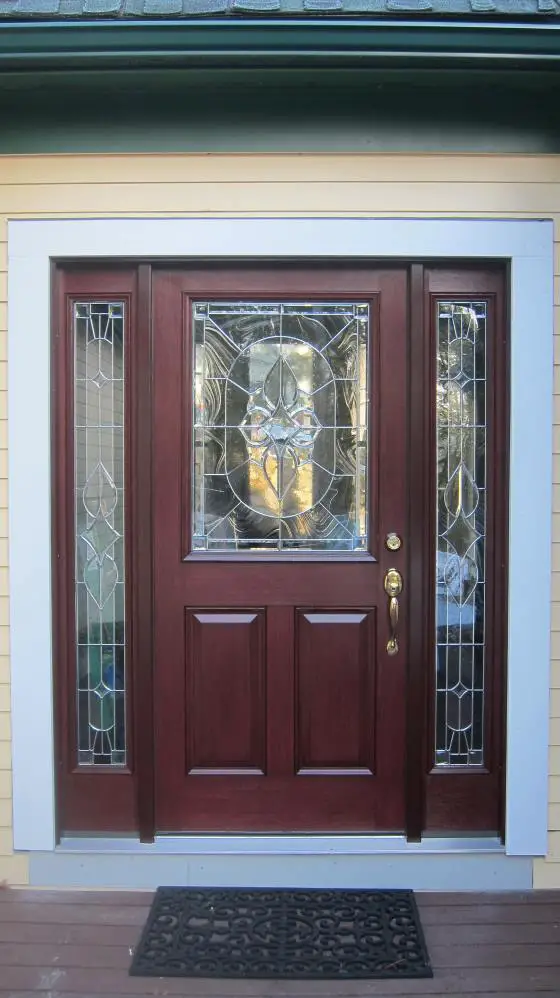Entry Door Installation Tips
 Ordering Entry Doors
Ordering Entry Doors
Often people order doors with sidelights. Sidelights are decorative panels that fit on one or both sides of the door frame. Often these panels have glass in them. The problem with sidelights is this: Security. If a sidelight is attached next to the door frame where the door latch (lockset/handle) will be, the door will not be as strong as it could be. Order the door with a 2x4 or 2x6 stiffener between the side light and the door frame. This will allow you to install 2 1/2 inch screws in the striker plate assembly. With these screws it will be tough to kick in your door.
Try to purchase a door with an adjustable threshold. This is really important. Often, after installation (especially in new housing) lumber shrinkage causes the door to fit poorly. If this happens, air may leak under the door. Adjustable thresholds allow you to fix this problem easily.
Think about your lockset options before you order. Predrilled holes are available from just about all manufacturers. This could save you money when dealing with your carpenter.
Be sure to check on door frame options, especially if you intend to stain your door. Some doors offer stainable clear frames as an option. They might not be a standard feature!! Beware!
Installation
One of the most common mistakes I see is installing a new door right on top of the subfloor or slab. HUGE mistake!! If ever you have been in a newer home where the throw rug in front of the door is swept away each time the door opens, you know what I am talking about. The solution is simple: install all entry doors on top of a 3/4 inch piece of wood which is attached to the subfloor. In certain cases you may have to put in a one inch thick piece of wood. Be sure to account for this extra piece of wood in the rough-in dimensions when framing the house!!
Entry doors need to be shimmed with tapered shims when they are attached to the rough framing. The hinge side of the door has tremendous stress on it from the weight of the door. As such, after a door was right where I wanted it, I took out one of the hinge screws (one from each hinge) in the frame and replaced it with an identical screw that was 3 inches long. This screw would pass through the frame, shims, and into the rough framing. The stress from the door is now transferred to the framing, not the door frame.
The reveal (space between the door and frame when closed) should always be consistent when the door is installed correctly. If the reveal along the top or side tapers, something is wrong.
If installing a wood door, be sure to immediately read and follow the finishing instructions! You may lose your warranty if you dillydally around.
Column B76
2 Responses to Entry Door Installation Tips